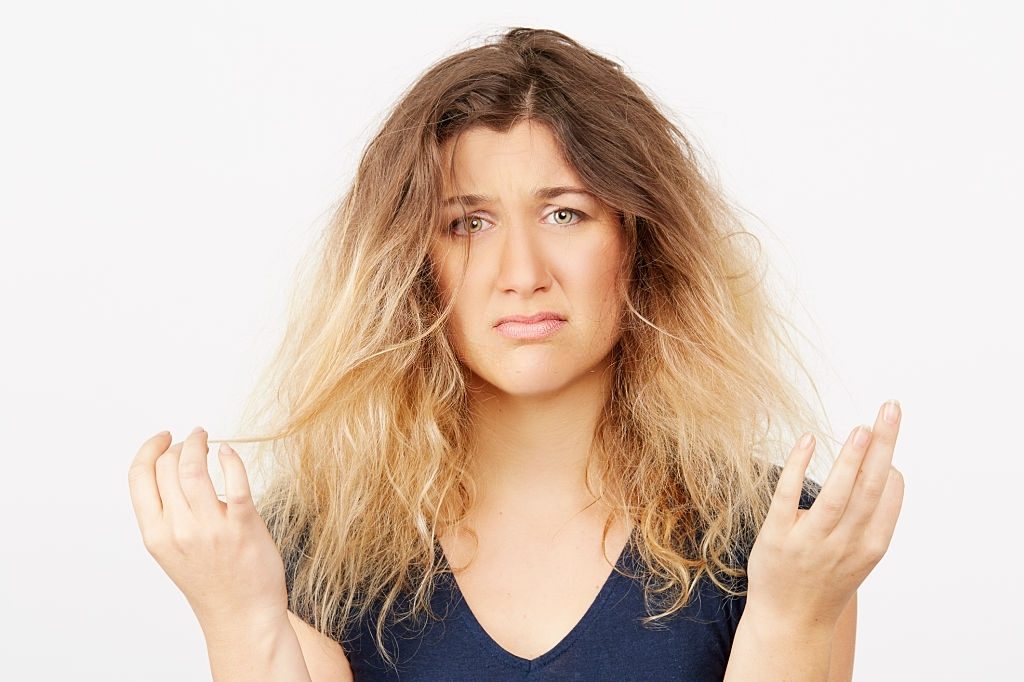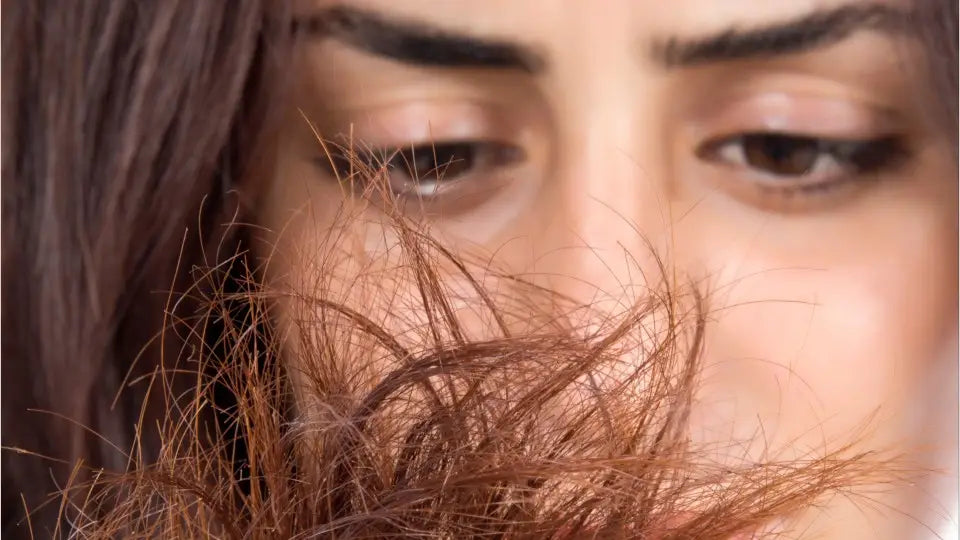Of all the common hair problems , oily hair is arguably one of the most frustrating.
While there is no shortage of anti-frizz serums and shine -enhancing sprays, there are still relatively few solutions for those with oily locks . This is especially true if those strands are flat and thin. When your hair looks greasy , all you want to do is weigh it down with even more products.
So what should a woman with oily hair do?
We've put together the eight daily habits that every woman with oily hair should adopt to have a healthy, balanced mane .
What causes oily hair? 
Before we look at how to deal with oily hair , it's important to understand the causes.
Most often, oily hair is caused by a buildup of sebum . As you may know, sebum is a natural oil produced by sebaceous glands located near hair follicles . Your body can usually determine how much oil it needs to produce to keep your scalp healthy and hydrated.
Unfortunately, the sebaceous glands sometimes produce too much sebum , the excess sebum that makes the scalp and hair feel greasy. This can be due to internal factors, like a hormonal imbalance , or external factors, like your daily beauty routine .
Also Read: 5 Ways to Repair Damaged Hair
Here are 8 habits to combat oily hair
How often you wash your hair, the types of products you use, and how you style your hair can contribute to your strands becoming oily. This is where the tips below come into play.
1. Apply conditioner the right way
Conditioner is not only good to use for oily hair , it is also necessary. It provides a good dose of hydration , nutrition and protection that shampoo alone cannot provide to your hair. The key, however, is to find one that meets your hair's needs.
Our suggestion : Try customizable formulas , which are individually formulated based on your unique hair type and hair goals ("sebum control" is one of them to combat excess scalp oil) .
The way you apply conditioner also affects oily hair . Instead of applying your conditioner all over your mane, we recommend using it only on the ends and avoiding the scalp altogether. This will prevent your hair from looking flat and greasy.
Don't forget to rinse your hair thoroughly. Sometimes what you think is grease is just shampoo or conditioner that you didn't rinse out completely.
2. Wash your hair less often
You read correctly. As counterintuitive as it may seem, washing your hair too often can be the cause of your oily roots .
Here's what happens : You wake up with an oily scalp , and you wash your hair to fix it. But in doing so, you deprive your hair of its natural sebum . Your body's response is to compensate with more sebum, which can sometimes lead to overproduction of sebum. The result is a never-ending cycle that leaves you with nothing but greasy hair .
Additionally, big box formulas are often filled with sulfates . While these powerful cleansing agents are not harmful, they can sensitize your scalp , especially with excessive washing . So, in addition to hair fibers that are too greasy , you risk having an itchy scalp and other forms of discomfort.
To combat this problem, try not to use shampoo at least once or twice a week (if you already wash your hair every day). And be sure to choose a sulfate-free shampoo . As an added bonus, if it’s made with natural ingredients, it will be gentle on your mane.
Don't expect to see results overnight—it may take a few weeks for your scalp's oil production to rebalance .
3. Change your hairbrush

With the right brush , you can remove and distribute some of that sebum so your roots look less oily .
Boar bristle brushes (or faux boar bristles, if you want a vegan option) are great for people with oily roots . The fibers help absorb and distribute natural oils throughout the hair .
Just be careful not to overbrush. This can stimulate excess oil production and can even damage hair and cause hair loss . As with most things in life, it's about finding the right balance.
Also find out how to detangle your hair correctly.
4. Choose your hair products wisely
While some hair care products can work wonders on your oily hair (hello, dry shampoo!), others only exacerbate the problem.
That's why when choosing your styling products, we recommend avoiding products labeled as " shine-enhancing " or " anti-frizz ." These formulas usually contain oil or silicone , which can weigh down your hair and make it appear oilier.
Instead, look for products with volumizing properties, which will help lift your hair and prevent it from coming into contact with your oily roots .
5. Don't touch your hair
It might not seem like a big deal, but all the finger movements you make throughout the day can really affect the way your hair looks and feels .
Just like your hair, your fingertips and face produce sebum , which can easily transfer to your hairstyle, making the problem of oily hair worse. In other words, do n't touch your hair !
6. Avoid straightening your hair
Bad news for flat iron addicts: Straightening and blow-drying your mane can make your locks even greasier . (Psst, gravity is working against you).
Straight hair lets grease and oil run straight down the hair shafts , making oily hair even more visible. Additionally, once straightened, your mane tends to lie flat on the scalp, which means it will likely come into contact with the oil on your scalp and face.
What is the solution ? Try a curly or wavy hairstyle, which will help add volume to your hair so it doesn't get too greasy too quickly.
7. Go easy on dry shampoo
Too much dry shampoo leads to unwanted product buildup , as it does with any product that sits on your hair. This can dehydrate your scalp and cause it to produce even more oil .
Try reducing the amount of dry shampoo and adding a wash day to your schedule (if you don't already wash your hair every other day) to combat this problem. This will rid your hair of the excess oil you're trying to hide and reduce the buildup of harmful products in the process.
8. Use a scalp scrub
To further reduce product buildup , we suggest incorporating a scalp scrub or exfoliant into your hair care routine once or twice a week.
Look for a product with finely ground textures like sugar (no microbeads). Be sure to apply it to a damp scalp , as the water will act as a carrier for the product. When applying the scrub , use small circular motions with your fingertips (never your nails) to work the exfoliant into your scalp , just as you would with a facial scrub.
For an easy DIY (and vegan!) scrub, we suggest mixing two tablespoons of sea salt, two tablespoons of lemon juice and two tablespoons of olive oil . The salt helps rid your scalp of dead skin, dirt, or buildup, while the olive oil gives your hair a healthy dose of moisture. Your greasy hair could be a thing of the past!




